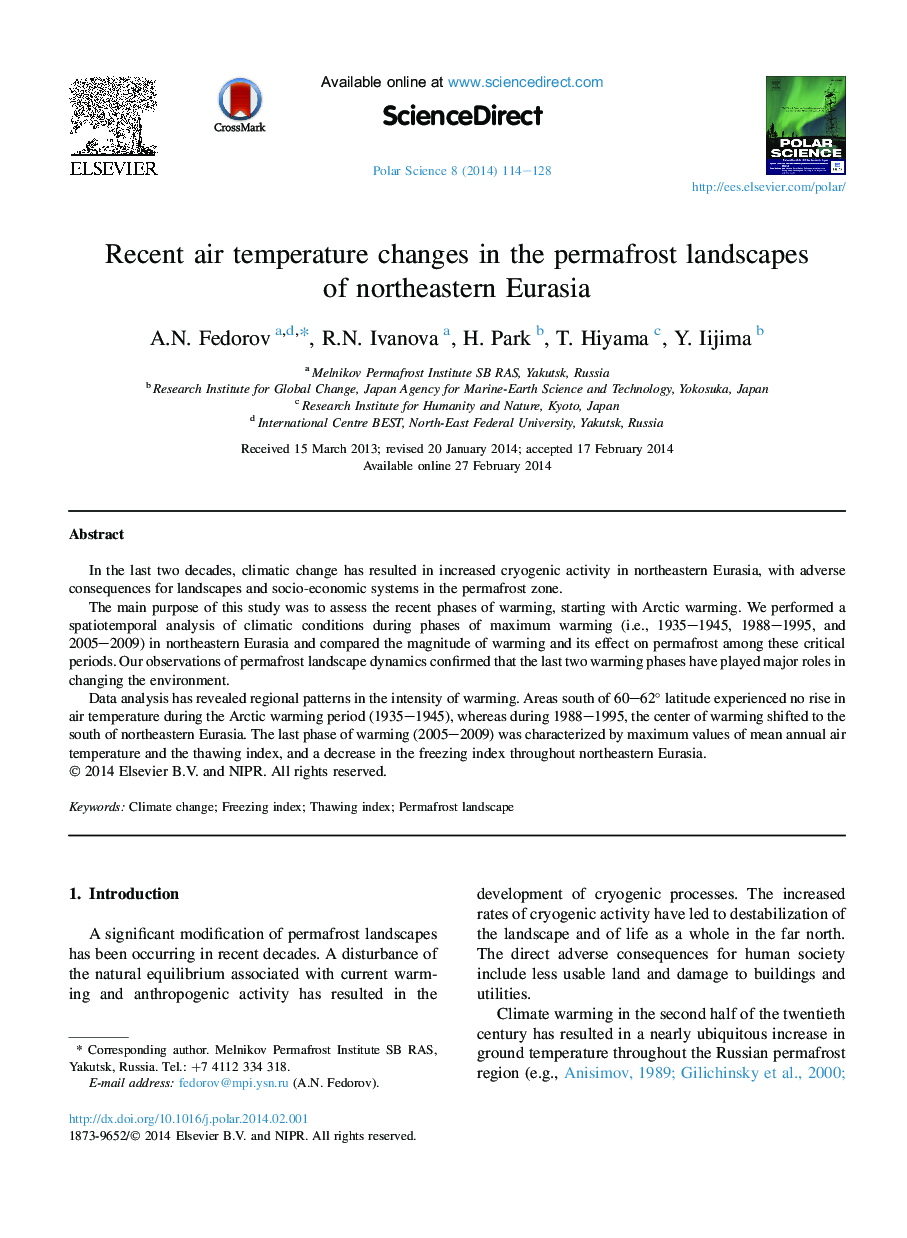| Article ID | Journal | Published Year | Pages | File Type |
|---|---|---|---|---|
| 4683202 | Polar Science | 2014 | 15 Pages |
In the last two decades, climatic change has resulted in increased cryogenic activity in northeastern Eurasia, with adverse consequences for landscapes and socio-economic systems in the permafrost zone.The main purpose of this study was to assess the recent phases of warming, starting with Arctic warming. We performed a spatiotemporal analysis of climatic conditions during phases of maximum warming (i.e., 1935–1945, 1988–1995, and 2005–2009) in northeastern Eurasia and compared the magnitude of warming and its effect on permafrost among these critical periods. Our observations of permafrost landscape dynamics confirmed that the last two warming phases have played major roles in changing the environment.Data analysis has revealed regional patterns in the intensity of warming. Areas south of 60–62° latitude experienced no rise in air temperature during the Arctic warming period (1935–1945), whereas during 1988–1995, the center of warming shifted to the south of northeastern Eurasia. The last phase of warming (2005–2009) was characterized by maximum values of mean annual air temperature and the thawing index, and a decrease in the freezing index throughout northeastern Eurasia.
